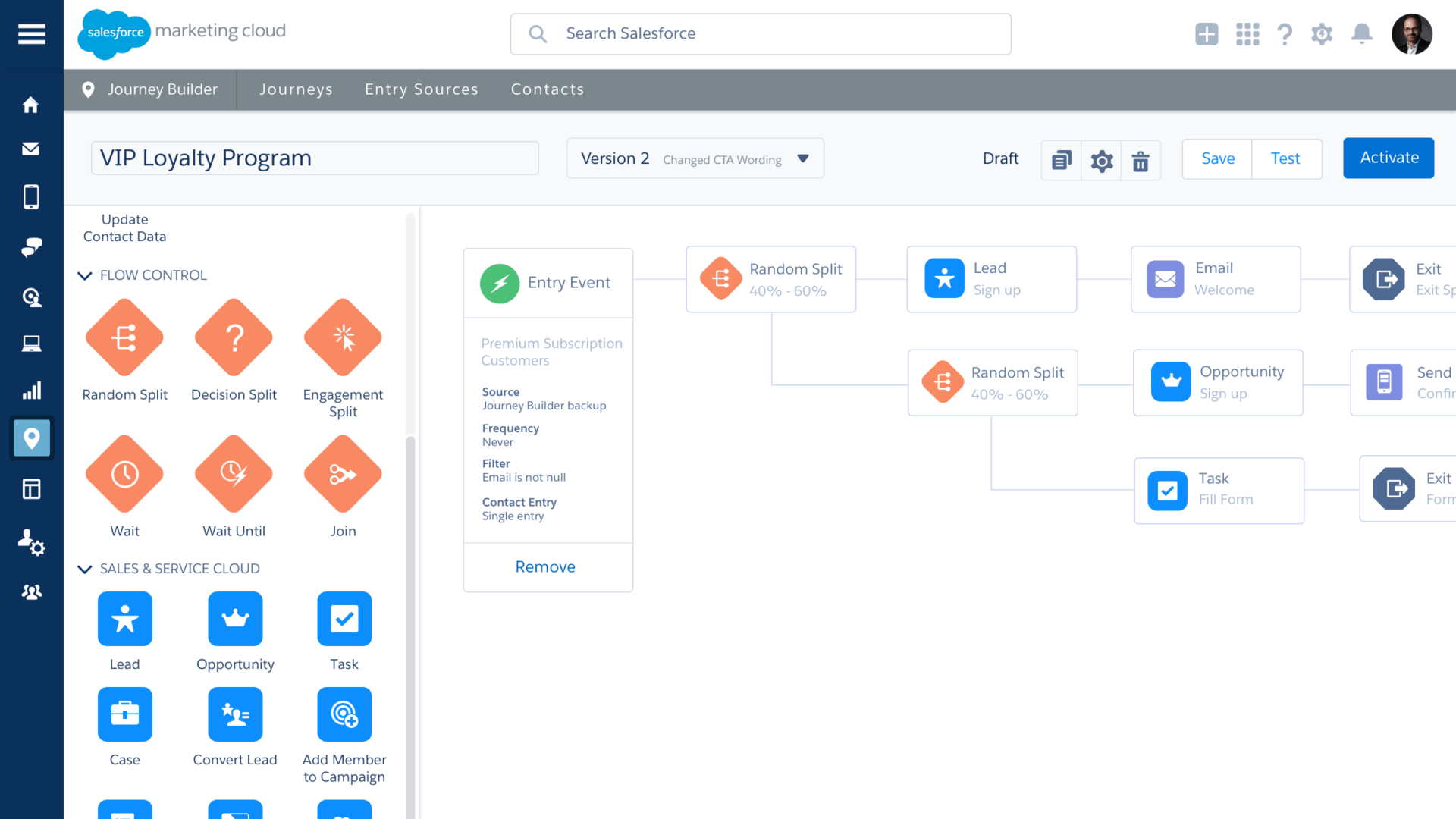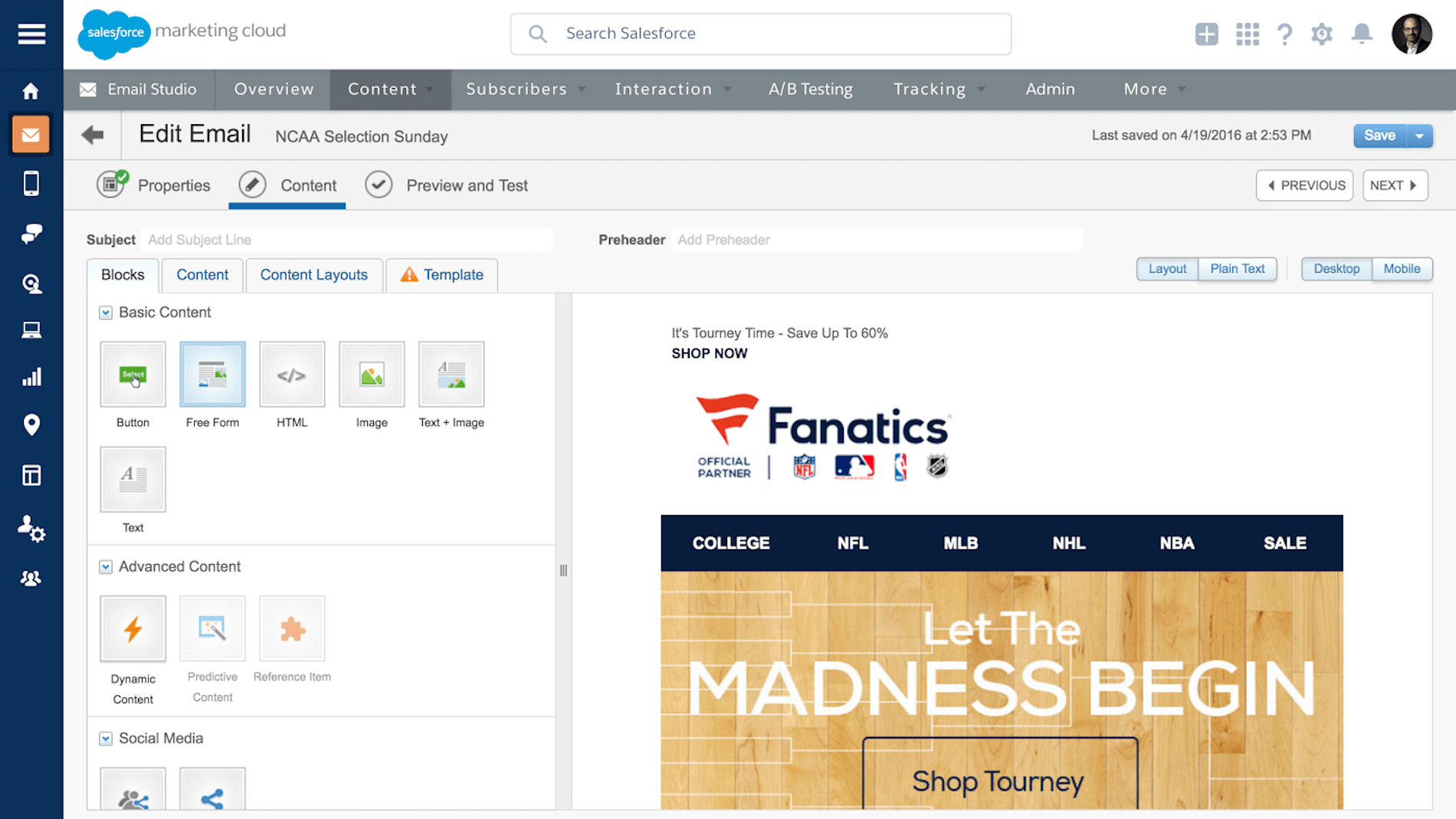Salesforce puts Lightning into its Marketing Cloud
The Marketing Cloud now integrates more closely with its fellow clouds, as the company also announces email and advertising updates and a new Marketing Cloud app.
Salesforce is adding more lightning to its clouds.
Today, the company announced the launch of Marketing Cloud Lightning, which follows the relaunch in February of its Sales and Service clouds on the Lightning platform. At the same time, Salesforce is announcing a variety of other enhancements in advertising, email and customer journeys, as well as the launch of the first Marketing Cloud mobile app.
Unveiled last year, the Lightning platform enables rapid development of software such as mobile apps, the creation of functional, reusable, drag-and-drop components and the ability to maintain a consistent interface across devices. For the user, one benefit is customizing your own interface with these pre-built components.
It’s “about giving the user the ability to build the exact UI [user interface] they want to interact with customers,” Vice President of Product Marketing Gordon Evans told me.
He gave the example of a regional sales manager who might want all of the email campaigns running in her region on her main screen. One component, for instance, might track email open rates from the campaigns. In addition to Salesforce-provided components, third-party components are available from the Salesforce AppExchange.
With the Marketing, Sales and Service clouds Lightninged, the company is emphasizing streamlined, consistent processes they can share.
For example, an updated Predictive Journeys in the Marketing Cloud can now access data in the Sales and Service clouds, while previously, Journeys were focused primarily on website and email data. A customer’s purchase history, for instance, is now more readily available as a direct factor in planning a new customer journey. Here are components in Journey Builder:
Another example of streamlining in the Marketing Cloud is the newly announced Advertising Studio, born from the combination of Active Audiences and Social.com.
Its new capabilities include automatically capturing leads directly from Facebook ads into customer information, configuring and deploying ads inside the Marketing Cloud’s Journey Builder and sharing audience segments from the Salesforce customer relationship management (CRM) system with Google’s Custom Audiences, a matching that previously only existed for Facebook, LinkedIn and Twitter.
Email is also getting a re-launch, with the new Email Studio that, being Lightninged, offers drag-and-drop personalized content blocks for building personalized emails without coding. Evans described it as “a completely re-imagined email” tool, with faster content building, testing and validation. In its announcement, Salesforce visualized one possible use of this new speed:
“For example, the minute Peyton Manning stepped on the podium to announce his retirement, [sports merchandising firm] Fanatics was able to send custom emails with merchandise targeted to fans who expressed interest in Peyton Manning in the past, and customized based on if they were Denver Broncos fans, Indianapolis Colts fans or Tennessee Volunteers fans.”
And the Marketing Cloud’s first app enables a marketer to remotely track the performance of emails, campaigns and journeys.
The growing competition between the major marketing clouds is leading each to seek out differentiators. Adobe, for instance, recently purchased user-generated content management platform Livefyre, giving it a leg up in that hyperactive space, and Oracle recently added account-based marketing lead acquisition.
In addition to Salesforce’s component-ized Lightning platform, Evans told me that the continued differentiator of his company’s Marketing Cloud is its access to “the world’s best CRM” and its tighter integration with the Sales and Service Clouds.
Contributing authors are invited to create content for MarTech and are chosen for their expertise and contribution to the martech community. Our contributors work under the oversight of the editorial staff and contributions are checked for quality and relevance to our readers. MarTech is owned by Semrush. Contributor was not asked to make any direct or indirect mentions of Semrush. The opinions they express are their own.
Related stories


